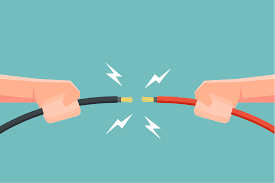 In 2019, Tech adoption changes -- some. It’s known as the Amazon effect. As brick-and-mortar based businesses dwindle in favor of online, access to smartphone and broadband are becoming the enablers of information flow to older adults. Pew Research helps us understand who, what, and possibly why people buy and own technology. Non-users, particularly broadband, are thus on one side of the so-called digital divide. The latest Mobile Technology and Home Broadband 2019 report reveals a change in the role of smartphones, particularly as a sole device for connecting to the Internet – 37% of responders to this year’s survey go online primarily using a smartphone, with 58% of 18-29-year-olds saying they mostly go online that way, though that number dropped to 15% for the 65+.
In 2019, Tech adoption changes -- some. It’s known as the Amazon effect. As brick-and-mortar based businesses dwindle in favor of online, access to smartphone and broadband are becoming the enablers of information flow to older adults. Pew Research helps us understand who, what, and possibly why people buy and own technology. Non-users, particularly broadband, are thus on one side of the so-called digital divide. The latest Mobile Technology and Home Broadband 2019 report reveals a change in the role of smartphones, particularly as a sole device for connecting to the Internet – 37% of responders to this year’s survey go online primarily using a smartphone, with 58% of 18-29-year-olds saying they mostly go online that way, though that number dropped to 15% for the 65+.
- Smartphone adoption moves up for the oldest. According to the commentary in the Pew report, while 59% of the 65-75 are smartphone owners, the new number was 40% for the 75+, which had an ownership rate of 31% (age 75-79), last surveyed in 2017, when 17% of the 80+ had them. Though the influence of education and income factors for the 75+ were not included, assumptions are straightforward – higher income and education drive up adoption. No kidding, given how high smartphone prices have become – and how they got all the way to $2000. And those prices do not include a monthly data plan.
- Speculating on why smartphone adoption for older adults is up? According to this Verizon store display, there are 6 flip phones left in the menu. AT&T also has six (at the bottom of the phone selections). A new marketing ploy for flip phones – avoid notification overload – seems aimed at the inundated Facebook, Twitter recipients – and suggests having a flip phone in addition to a smartphone. But anyway, with few flip phones to buy any more, it is no surprise that older adult smartphone adoption has grown.
- Home broadband – that enabler of streaming – is also up to 59% of the 65+. Broadband adoption, not surprising given the average cost, ironically in a country were 145 million people do not have access to a low-priced plan. At a nationwide average of $60/month, 44% of lower income responders do not have home broadband. For the 41% of the 65+ that do not, likely price was a factor.
What’s does growing adoption mean in practice? Perhaps wireless broadband in public places like restaurants has become so good, that bringing your own device is enough for many who do not have broadband at home. For others, perhaps they have it at work or at the home of a family member. As smartphone prices have climbed at the high end, upgrade intervals are approaching 3 years and leaving phone-centric companies like Apple talking up services as the replacement revenue stream for a 30% recent drop in iPhone sales (8% drop for Samsung). But other factors could be at play as well for seniors – well-publicized online scams and fraud, well-publicized surveys that show older adults as sharers of fake news, and the need for better training for users trying to protect their identity and privacy.
from Tips For Aging In Place https://www.ageinplacetech.com/blog/tech-adoption-grows-older-adults-why
 What does it mean when offerings and consumers aren’t aligned? For older consumers and their families, the technology market and senior housing industry are two cases in point. Consider
What does it mean when offerings and consumers aren’t aligned? For older consumers and their families, the technology market and senior housing industry are two cases in point. Consider